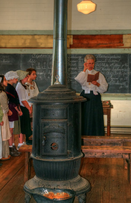SAGINAW COUNTY SCHOOLS
*From the Past to Today*
In 1900 Michigan had 7,163 townships
and 504,985 pupils
Saginaw County consisted of:
27 townships, 3 cities, and 5 villages.
THIS IS THE LIST
OF THE : 27 Townships
(WE DID NOT INCLUDE CITY OR TOWN SCHOOLS)
PLEASE NOTE:
THIS IS A WORK IN PROGRESS
I'M WORKING ON THIS ALMOST EVERY DAY,
AND I APOLOGIZE FOR THE EXTENDED WAIT.
THIS IS A WORK IN PROGRESS
I'M WORKING ON THIS ALMOST EVERY DAY,
AND I APOLOGIZE FOR THE EXTENDED WAIT.
|
LIST ONE
|
LIST TWO
|
LIST THREE
|
Albee
Birch Run Blumfield Brady Brant Bridgeport Buena Vista Carrollton Chapin Chesaning |
F-M
Frankenmuth
|
R-Z
Richland
|
TOWNSHIPS COLORED IN GOLD ARE COMPLETED,
WE HOPE TO HAVE EVERYTHING FILMED, ORGANIZED, READY
AND ONLINE BY END OF 2024!
WE HOPE TO HAVE EVERYTHING FILMED, ORGANIZED, READY
AND ONLINE BY END OF 2024!
LOCATION OF SCHOOLS IN SAGINAW COUNTY
Michigan's first public school law was passed on April 12, 1827, by the Legislative Council of the Michigan Territory. Passage of this law was a recognition that education was a public responsibility rather than an individual responsibility. This act began a practice of organizing school districts within a township, with township officials responsible for drawing district boundaries, and requiring any township with 50 or more families to provide a schoolmaster.
A more comprehensive act was passed in 1829 known as “An Act to Provide and Regulate Common Schools.” The electors of each township were required to elect five persons to serve for three years as commissioners of common schools. They were responsible for laying out the boundaries of individual school districts within the township, and adjusting boundaries as necessary. Thus, school districts emerged as a unit of local government. After the districts were established, each district held a public meeting to elect three members to serve as directors of the school district for one-year terms. The directors became the forerunners of the modern school board. The 1829 act also authorized fractional school districts. A fractional district contained land from two or more townships when a homogeneous community crossed township lines. At the present time, several primary fractional school districts continue to exist.
After statehood, the Legislature passed a Primary School Law in 1837. Each district elected a three-member board: they were moderator, assessor, and director. The moderator presided at all meetings, the assessor was responsible for tax collections, and the director had general management responsibilities. The township clerk was an ex-officio member of the board. At the end of 1838, the Superintendent of Public Instruction reported there were 1,020 school districts with 28,764 students.
In 1843, Public Act 50, a new primary school district act, was passed. A township board of inspectors was created to replace the commissioners of common school s and was made responsible for the establishment of school districts within a township. The membership was fixed at three, including the township clerk. No school district could be larger than nine sections (usually nine square miles). A significant feature of Act 50 was its authorization for any township in which a village or city was located to consolidate two or more districts. This provided the basis for the creation of union districts. Detroit became the first union district in 1843, but this consolidation was the result of a specific statute passed by the Legislature. As of 1850, there were at least seven other union districts.
The organization of Michigan school districts was a public policy issue before Michigan became a state and continues as an issue today. The number of school districts increased through 1912 and then began to decline, but there has been a continuing concern that there were too many school districts and that the number of districts should be reduced. This belief continues today, although the reasons for advocating reorganization have changed over time.
For many years, the principal reason for reorganization was to locate all children in a K-12 district. The two major educational issues currently are the per pupil expenditure disparity among school districts and the overall quality of elementary-secondary education. Both issues could be addressed through consolidation of school districts. The desire for reorganization of school districts has been advocated by educators and other public officials. But this has not had popular support among the general public.
There are a variety of reasons why school district boundaries are irregular. The principal reason, identified 120 years ago by the Superintendent of Public Instruction, was the desire of families to be close to the school house. This policy was the foundation of a local control system. There never has been much structure to the system. In the early days, township officials created districts. As time went on, and society became more complex, no higher body was given responsibility for school district organization. Thus, no plan was developed that would result in the orderly development of school districts. Educators advocated reorganization, but they were a voice in the wilderness. Elected state officials were more responsive to local citizens, who generally opposed any major change in school district boundaries unless approved by a majority of the electorate. On June 30, 1990, there were 384 districts with fewer than 2,500 pupils. Thus, there appears to be ample opportunities for consolidation of existing districts.
This paper provides background information useful for a serious discussion of school district reorganization by public officials and interested citizens. First, the paper provides an historical perspective of school district organization by tracing the evolution of school districts beginning with the period Michigan was a territory. It also describes the existing statutory methods for altering school district boundaries. Finally, the paper describes the shift in pupil membership to the smaller membership districts over the period 1970-1990, a period during which the total state membership declined in excess of 525,000 pupils.
SCHOOL DISTRICT ORGANIZATION IN MICHIGAN NOVEMBER, 1990 https://crcmich.org/PUBLICAT/1990s/1990/rpt298.pdf
Frl. - FRACTIONAL DISTRICT (District divided between two townships)
A Fractional School District was one that received pupils from more than one township.
The townships from where the pupils lived, was required to help finance the school district on a prorated formula basis.
SECTION 16 of every township was know as the “school section” because any money obtained from the sale of land in this section, was never completely remodeled throughout the years.
THOMAS TOWNSHIP SCHOOL DISTRICT
Over the years, pupils living in certain areas of Thomas Township were educated in four fractional school districts in surrounding townships, often because of geographic convenience. The four districts received financial aid from Thomas Township. Three of the district schools: Paines School, James No.3, and Fremont No.2, received pupils from the southwestern part of Thomas Township. The fourth district, Richland No. 6, received pupils from the northwest part of that township.
**************************************************************************************************************
Some information found at the Public Libraries of Saginaw - Hoyt - Saginaw Michigan
WE ARE NOT INCLUDING THE SCHOOLS IN THE CITIES/TOWNS AT THIS TIME
Additions or corrections appreciated. We would also be grateful for OLD OR NEW pictures of these schools.
PLEASE BE PATIENT THIS IS A WORK IN PROGRESS. VOLUNTEERS ARE CURRENTLY OUT PHOTOGRAPHING THE
Michigan's first public school law was passed on April 12, 1827, by the Legislative Council of the Michigan Territory. Passage of this law was a recognition that education was a public responsibility rather than an individual responsibility. This act began a practice of organizing school districts within a township, with township officials responsible for drawing district boundaries, and requiring any township with 50 or more families to provide a schoolmaster.
A more comprehensive act was passed in 1829 known as “An Act to Provide and Regulate Common Schools.” The electors of each township were required to elect five persons to serve for three years as commissioners of common schools. They were responsible for laying out the boundaries of individual school districts within the township, and adjusting boundaries as necessary. Thus, school districts emerged as a unit of local government. After the districts were established, each district held a public meeting to elect three members to serve as directors of the school district for one-year terms. The directors became the forerunners of the modern school board. The 1829 act also authorized fractional school districts. A fractional district contained land from two or more townships when a homogeneous community crossed township lines. At the present time, several primary fractional school districts continue to exist.
After statehood, the Legislature passed a Primary School Law in 1837. Each district elected a three-member board: they were moderator, assessor, and director. The moderator presided at all meetings, the assessor was responsible for tax collections, and the director had general management responsibilities. The township clerk was an ex-officio member of the board. At the end of 1838, the Superintendent of Public Instruction reported there were 1,020 school districts with 28,764 students.
In 1843, Public Act 50, a new primary school district act, was passed. A township board of inspectors was created to replace the commissioners of common school s and was made responsible for the establishment of school districts within a township. The membership was fixed at three, including the township clerk. No school district could be larger than nine sections (usually nine square miles). A significant feature of Act 50 was its authorization for any township in which a village or city was located to consolidate two or more districts. This provided the basis for the creation of union districts. Detroit became the first union district in 1843, but this consolidation was the result of a specific statute passed by the Legislature. As of 1850, there were at least seven other union districts.
The organization of Michigan school districts was a public policy issue before Michigan became a state and continues as an issue today. The number of school districts increased through 1912 and then began to decline, but there has been a continuing concern that there were too many school districts and that the number of districts should be reduced. This belief continues today, although the reasons for advocating reorganization have changed over time.
For many years, the principal reason for reorganization was to locate all children in a K-12 district. The two major educational issues currently are the per pupil expenditure disparity among school districts and the overall quality of elementary-secondary education. Both issues could be addressed through consolidation of school districts. The desire for reorganization of school districts has been advocated by educators and other public officials. But this has not had popular support among the general public.
There are a variety of reasons why school district boundaries are irregular. The principal reason, identified 120 years ago by the Superintendent of Public Instruction, was the desire of families to be close to the school house. This policy was the foundation of a local control system. There never has been much structure to the system. In the early days, township officials created districts. As time went on, and society became more complex, no higher body was given responsibility for school district organization. Thus, no plan was developed that would result in the orderly development of school districts. Educators advocated reorganization, but they were a voice in the wilderness. Elected state officials were more responsive to local citizens, who generally opposed any major change in school district boundaries unless approved by a majority of the electorate. On June 30, 1990, there were 384 districts with fewer than 2,500 pupils. Thus, there appears to be ample opportunities for consolidation of existing districts.
This paper provides background information useful for a serious discussion of school district reorganization by public officials and interested citizens. First, the paper provides an historical perspective of school district organization by tracing the evolution of school districts beginning with the period Michigan was a territory. It also describes the existing statutory methods for altering school district boundaries. Finally, the paper describes the shift in pupil membership to the smaller membership districts over the period 1970-1990, a period during which the total state membership declined in excess of 525,000 pupils.
SCHOOL DISTRICT ORGANIZATION IN MICHIGAN NOVEMBER, 1990 https://crcmich.org/PUBLICAT/1990s/1990/rpt298.pdf
Frl. - FRACTIONAL DISTRICT (District divided between two townships)
A Fractional School District was one that received pupils from more than one township.
The townships from where the pupils lived, was required to help finance the school district on a prorated formula basis.
SECTION 16 of every township was know as the “school section” because any money obtained from the sale of land in this section, was never completely remodeled throughout the years.
THOMAS TOWNSHIP SCHOOL DISTRICT
Over the years, pupils living in certain areas of Thomas Township were educated in four fractional school districts in surrounding townships, often because of geographic convenience. The four districts received financial aid from Thomas Township. Three of the district schools: Paines School, James No.3, and Fremont No.2, received pupils from the southwestern part of Thomas Township. The fourth district, Richland No. 6, received pupils from the northwest part of that township.
**************************************************************************************************************
Some information found at the Public Libraries of Saginaw - Hoyt - Saginaw Michigan
WE ARE NOT INCLUDING THE SCHOOLS IN THE CITIES/TOWNS AT THIS TIME
Additions or corrections appreciated. We would also be grateful for OLD OR NEW pictures of these schools.
PLEASE BE PATIENT THIS IS A WORK IN PROGRESS. VOLUNTEERS ARE CURRENTLY OUT PHOTOGRAPHING THE




